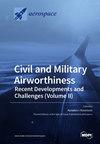基于小波分解和堆叠去噪自动编码器的无人飞行器异常检测方法
IF 2.1
3区 工程技术
Q2 ENGINEERING, AEROSPACE
引用次数: 0
摘要
本文提出了一种基于小波分解和堆叠去噪自编码器的无人机异常检测方法。该方法考虑了噪声数据的负面影响和深度学习模型的特征提取能力。它旨在利用小波分解和堆叠去噪自编码器方法提高拟议异常检测方法的准确性。基于无人机飞行数据的异常检测是无人机状态监测和潜在异常状态挖掘的重要方法,是降低无人机飞行事故风险的重要手段。然而,无人机任务场景的多样性导致其所处环境复杂恶劣,获取的数据会受到噪声的影响,这给基于无人机数据的精确异常检测带来了挑战。首先,我们利用小波分解对原始数据进行去噪;然后,利用堆叠去噪自编码器实现特征提取。最后,使用 softmax 分类器实现无人机异常检测。实验结果表明,所提出的方法在噪声数据情况下仍然具有良好的性能。具体来说,准确率达到了 97.53%,精确率为 97.50%,召回率为 91.81%,F1 分数为 94.57%。此外,所提出的方法还优于四种对比模型,表现更为突出。因此,它在减少无人机飞行事故和提高操作安全性方面具有巨大潜力。本文章由计算机程序翻译,如有差异,请以英文原文为准。
An Anomaly Detection Method for UAV Based on Wavelet Decomposition and Stacked Denoising Autoencoder
The paper proposes an anomaly detection method for UAVs based on wavelet decomposition and stacked denoising autoencoder. This method takes the negative impact of noisy data and the feature extraction capabilities of deep learning models into account. It aims to improve the accuracy of the proposed anomaly detection method with wavelet decomposition and stacked denoising autoencoder methods. Anomaly detection based on UAV flight data is an important method of UAV condition monitoring and potential abnormal state mining, which is an important means to reduce the risk of UAV flight accidents. However, the diversity of UAV mission scenarios leads to a complex and harsh environment, so the acquired data are affected by noise, which brings challenges to accurate anomaly detection based on UAV data. Firstly, we use wavelet decomposition to denoise the original data; then, we used the stacked denoising autoencoder to achieve feature extraction. Finally, the softmax classifier is used to realize the anomaly detection of UAV. The experimental results demonstrate that the proposed method still has good performance in the case of noisy data. Specifically, the Accuracy reaches 97.53%, the Precision is 97.50%, the Recall is 91.81%, and the F1-score is 94.57%. Furthermore, the proposed method outperforms the four comparison models with more outstanding performance. Therefore, it has significant potential in reducing UAV flight accidents and enhancing operational safety.
求助全文
通过发布文献求助,成功后即可免费获取论文全文。
去求助
来源期刊

Aerospace
ENGINEERING, AEROSPACE-
CiteScore
3.40
自引率
23.10%
发文量
661
审稿时长
6 weeks
期刊介绍:
Aerospace is a multidisciplinary science inviting submissions on, but not limited to, the following subject areas: aerodynamics computational fluid dynamics fluid-structure interaction flight mechanics plasmas research instrumentation test facilities environment material science structural analysis thermophysics and heat transfer thermal-structure interaction aeroacoustics optics electromagnetism and radar propulsion power generation and conversion fuels and propellants combustion multidisciplinary design optimization software engineering data analysis signal and image processing artificial intelligence aerospace vehicles'' operation, control and maintenance risk and reliability human factors human-automation interaction airline operations and management air traffic management airport design meteorology space exploration multi-physics interaction.
 求助内容:
求助内容: 应助结果提醒方式:
应助结果提醒方式:


